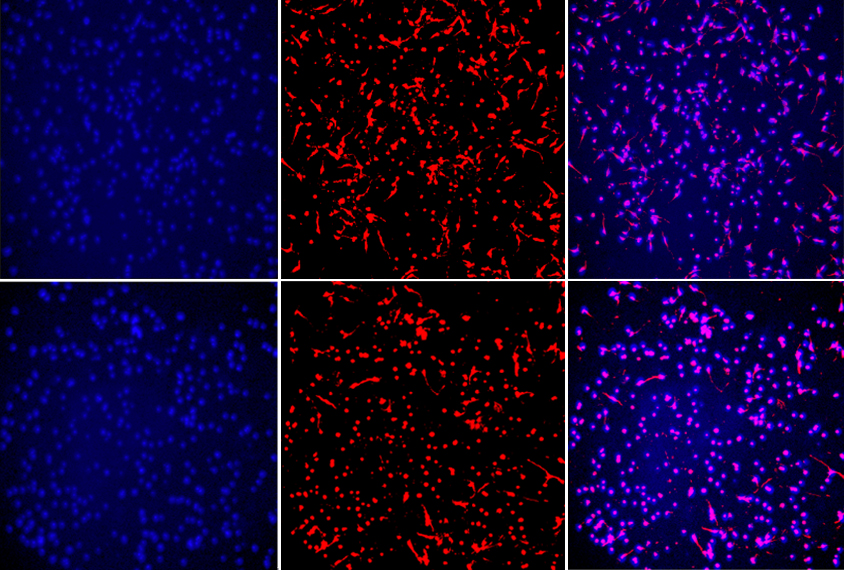A new technique optimizes the production of neurons derived from people with autism-linked mutations for use in high-throughput drug screens. The effort may accelerate the discovery of treatments for autism, the researchers say.
Unearthing drugs with the potential to treat autism often involves assessing compounds for their ability to reverse autism-like traits in mouse models. But most drugs shown to be effective in mice haven’t worked in people.
Some researchers have turned to screening drugs in human neurons prepared from induced pluripotent stem cells (iPSCs) — mature cells, such as skin cells, that have been chemically reprogrammed back into an immature state. But these neuronal screens lack robustness, mainly because of variability in the genetic background of iPSCs and in the laboratory procedures used to coax them to differentiate into neurons. As a result, compounds identified as therapeutic in one neuronal screen often fail to show an effect in another.
To sidestep those issues, researchers at the Scripps Research Institute Molecular Screening Center in Jupiter, Florida, simplified and standardized the production of iPSC-derived neurons. Their procedure makes it possible to grow millions of neurons inexpensively and freeze the cells in batches until they are ready to use.
T
he team used CRISPR/Cas9 gene editing to introduce mutations in genes linked to intellectual disability and autism — including DDX3X, FOXP1 and SHANK3 — in iPSCs derived from a non-autistic person. They also made iPSCs from the cells of an autistic person with a mutation in the ADNP gene and from an unaffected sibling.They then reprogrammed the cells into a type of neuron that releases the neurotransmitter glutamate. Alterations in glutamate signaling have been implicated in autism’s social and motor traits.
The DDX3X and ADNP neurons formed fewer and shorter neurites, tiny branches that send and receive signals from other neurons. So the researchers assessed more than 5,000 compounds for their ability to promote neuronal branching in those neurons, as measured by a machine-learning algorithm.
“This would have been very tedious by hand and almost impossible on such a large scale,” says Louis Scampavia, co-director of the Scripps Research Institute Molecular Screening Center.
They selected 147 compounds for further testing at different doses. Of these, three promoted neuronal branching in the mutated cell lines. The study was published in February in SLAS Discovery.
Collaborators at the Icahn School of Medicine at Mount Sinai in New York City are using the iPSCs to replicate these findings, says Timothy Spicer, who co-directs the Molecular Screening Center with Scampavia. The team is also using artificial intelligence to analyze blinded data to identify potential drugs that were not flagged in the initial screen.
Demonstrating the robustness of large-scale drug screening in human neurons sets the stage for testing hundreds of thousands of compounds to treat autism, Spicer says. They plan to conduct even more ambitious screens in cells harboring other mutations — which could identify a compound that works on several autism genes or reveal if mutations need to be matched to specific treatments, Scampavia says.





